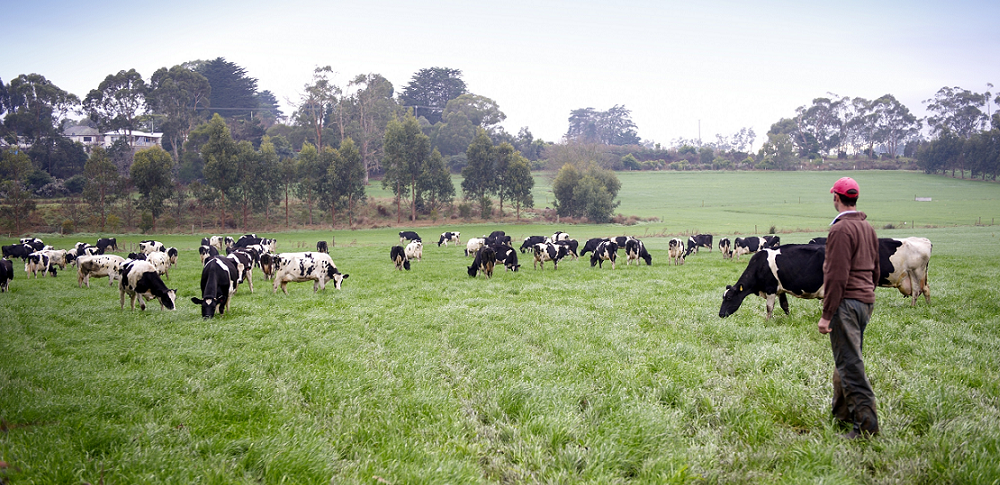The Australian Dairy Plan launched today aims to drive a significant turnaround in the industry’s outlook via a range of bold initiatives targeting increased profitability, confidence and unity over the next five years and beyond.
It is the first time key organisations representing the whole dairy supply chain have worked together to develop a national strategic plan. By increasing the profitability of dairy farms, implementation of the plan can increase Australia’s annual milk production by almost one billion litres, add $500 million of farm gate value for farmers and help create several thousand new jobs, mostly in rural and regional areas.
Reform of industry structures is one of five key commitments for change identified during an extensive nationwide consultation involving over 1,500 industry participants. The plan sets out the need for further consultation and an industry vote as being essential for successful reform.
Other commitments also include attracting new people and investment, a greater focus on marketing, increasing business and risk management skills and tools, and improving trust between farmers and processing companies.
Independent Chair, John Brumby AO, said Australia was one of the world’s leading dairy producing countries with an annual farm gate value of $4.6 billion and employing 43,500 people, and the industry was vital to the health of many regional economies, despite experiencing a number of challenging years.
“The Australian Dairy Plan demonstrates a collective commitment of industry organisations representing the whole supply chain to pull together to achieve better outcomes for everyone working in dairy and the communities which rely on the industry.
“It’s a plan that has been built from the ground up. One of the biggest listening exercises in the industry’s history identified a common set of issues voiced across the country. These inform the plan’s five key commitments and targeted initiatives to deliver increased profitability, confidence and unity.
“For farmers, it is vital that their hard work results in appropriate reward. The plan has a strong focus on providing farmers with the services and tools to achieve consistent profitability in an increasingly challenging operating environment. There will be a roll-out of initiatives to attract new people and investment into the industry, to help farmers grow their businesses.
“For processing companies, the plan lays out a program of activities that will help to rebuild milk supply. There’s a recognition of the need to rebuild trust with farmers and of the opportunities for the industry to collaborate in activities like industry marketing to promote the value of dairy and reasons to consume.
“For dairy communities, the plan provides certainty that the industry is committed to pulling together and overcoming the issues of recent times and offering long term, high quality employment opportunities.
“Our focus now is on implementation. The partner organisations are locked into delivering on the plan’s commitments and there will be regular updates on this progress. This is a good plan that can make a real difference and I encourage everyone to get behind it.”
Australian Dairy Plan key success measures by 2025
- Increased profitability across the dairy supply chain – with greater than 50 per cent of farms achieving profit of at least $1.50 EBIT/kgMS (average over five years)
- Increased confidence of dairy businesses in the industry’s future – with more than 75 per cent of farmers and processors confident about the future
- Greater unity across the industry by working together to address key challenges – with more than 75 per cent of farmers and processors positive about industry unity.
Implementation of the plan can increase national milk production from 8.7 billion litres currently to 9.6 billion litres by 2025, create an additional $500 million of farm gate value each year and several thousand new jobs, mostly in rural and regional areas.
Additional commentary from the Australian Dairy Plan’s four partner organisations
Australian Dairy Farmers
Australian Dairy Farmers President, Terry Richardson, said: “The Dairy Plan has highlighted the interdependencies in our supply chain and the opportunities for the whole industry to benefit from working together more closely, like investing together in marketing and community trust activities. Key amongst these are initiatives to promote Australian dairy as wholesome and nutritious, reinforce the role of dairy in an everyday healthy and balanced diet, and influence key opinion leaders on the value of dairy.”
Australian Dairy Products Federation
Australian Dairy Products Federation President, Grant Crothers said: “Rebuilding trust between farmers and processors is a key commitment and vital to strengthening industry confidence and unity. The processing sector is committed to providing increased transparency around farm gate milk prices and the value of milk, and the introduction of a new Milk Value Portal has been designed for that purpose. In a post-COVID world, the renewed focus on local manufacturing and communities plays to our strengths and with trust and confidence throughout the supply chain, we can grow our ‘world’s best’ manufacturing platform.”
Dairy Australia
Dairy Australia Board Director, Jeff Odgers, said: “It’s clear that farmers need increased business and risk management skills to navigate an increasingly volatile operating environment. The plan puts forward a range of tools and services that we will make available to farmers. One of our priority initiatives is to intensify the roll-out of the Our Farm, Our Plan program. Our target is for all dairy farm businesses to have a documented long-term plan and for at least 75% of dairy farms to be using risk management tools and products within five years.”
Gardiner Dairy Foundation
Gardiner Dairy Foundation Chair, Dr Bruce Kefford, said: “The Dairy Plan is also about keeping a strong focus on successful industry programs and leveraging them more effectively. This includes ongoing work in research and innovation, policy leadership, market development, capability development, leadership, culture and sustainability, where the industry has recognised expertise.”

